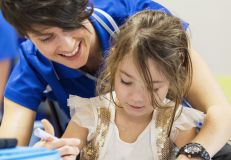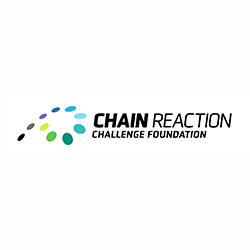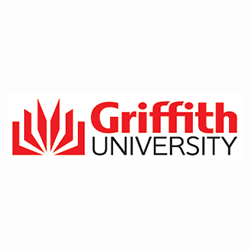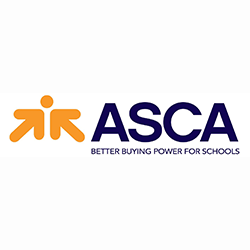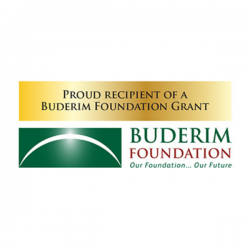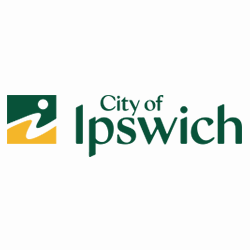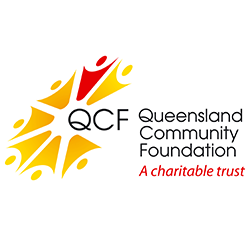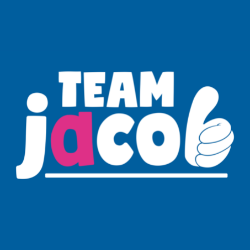Research
AEIOU Research & Assessment team integrates research projects and clinical assessments of our children with our therapy and care service to help us better understand the needs and strengths of the children and families we support.
AEIOU holds Australia's largest data source on children with autism under 6. This longitudinal research holds great promise for collaborations.
Our research focuses on six priority areas:
- Curriculum impact: Impact of the clinical delivery of our curriculum on the children we support, investigating 15 domains of development and clinical assessments.
- Family support: Impact of service on family or caregiver wellbeing, including their ability to participate in the workforce and/or community, their mental health and sense of competency to support their child.'
- Evidence-based practice: Efficacy of our transdisciplinary team and our service delivery model, and the value in intensive early intervention.
- Transition to school: Measuring supports during and after transition from AEIOU to another education setting, staying in touch with families beyond AEIOU.
- Rural / remote access to care: Addressing the needs of families and children in rural / remote settings and how they access therapeutic care.
- Diversity: Understanding the diverse cohort of families we support.
Assessment
Clinical assessments are the foundation for our research, used to measure a child's abilities, strengths and needs compared to children of a similar age and capture a child's progress over time.
We conduct standardised assessments with all children when they start at AEIOU, 12-monthly, and on transition. Clinical assessments such as the Autism Diagnostic Observation Schedule (ADOS), the Mullen Scales of Early Learning, and the Vineland Adaptive Behavior Scales provide information to the National Disability Insurance Scheme about children's support needs.
Collaborations
Our Research & Assessment team at AEIOU collaborate with external agencies who have both expertise in autism and an interest in research relating to ASD.
AEIOU Research and Innovation Committee
The AEIOU Research and Innovation Committee (ARIC) oversees and facilitates sustainable research that has the potential to benefit both children with autism and their families, and works together to:
- Plan research projects to be undertaken at AEIOU, and coordinate research activities with respect to children and families;
- Support applications for external funding to financially support research activity;
- Assess and review research proposals generated by AEIOU, individuals in the AEIOU Research and Innovation Committee or external institutions;
- Ensure that constructive research relationships are maintained between families of children with ASD, researchers, AEIOU staff and the AEIOU Foundation;
- Make recommendations to the AEIOU Board regarding research projects;
- Monitor and review the progress of research activities undertaken at AEIOU;
- Take into consideration the research priorities endorsed by the AEIOU Board; and
- Communicate and disseminate information relevant to research proposed or undertaken at AEIOU to ARIC.
Griffith University Autism Centre of Excellence (ACE)
The University of Queensland
La Trobe University
Conducting a research project?
The Autism Research and Innovation Committee (ARIC) defines the research priority areas for research conducted at AEIOU. This means that when we examine research applications that come to AEIOU, they will be evaluated as to whether they fit into the identified priorities and also, when we apply for funding, we will be ensuring that it fits within the following priority areas:
- Evaluation of the AEIOU curriculum
- Transition to school topics: Understanding specific child and family issues (including cultural matters) related to aiding children to have the best outcomes when they transition from AEIOU and for AEIOU to deliver more informed early intervention services
- School readiness issues: Identifying critical skills that are needed for children when they transition to school
- Comparison between delivery programs: Researching how many hours of intervention provide the best outcomes for individual children
- Systematic evaluation of specific practices occurring at AEIOU
- Scientific merit
To propose a research project, or advertise for participants in a study you're currently conducting, please download and submit this form. Once received, the proposal will be discussed with the AEIOU Research and Innovation Committee at its monthly meeting.
If you have an interest in research, and would like to know more about the AEIOU Research and Innovation Committee, please email research@aeiou.org.au.
Research studies
-
Children's Skills
Subtyping Project – funded by the Australian Federal Government:
Conducted as part of a nation-wide collaboration of Autism Specific Early Learning and Care Centres (ASELCCs), this study investigates the factors determining a child’s response to early intervention, and seeks to identify sub-groups of children based on these responses. This will assist in targeting interventions based on the skills and characteristics of the child.
-
Communication
Minimal Language Project:
This project aims to better understand, predict, meaningfully measure, and report spoken language progress and outcomes for children with autism who are minimally verbal. Based on the results of this research, a clinical guideline will be developed for the assessment of, intervention for, and reporting of spoken language progress and outcomes for children who have minimal language skills.
-
Parent Perspectives
Parental Perspectives Project:
This project explores parents’ understanding of Early Intervention Services for children with autism, and documenting parents’ decision-making processes when choosing an Early Intervention Service for their child. By understanding how parents make these decisions, AEIOU can develop educational material for parents of young children with autism, which will help them navigate the world of early intervention services and make the best decision to support their child.
First Concerns:
AEIOU aims to identify the nature of parents’ first concerns for their child, prior to receiving the diagnosis of Autism Spectrum Disorder. How old are children when parents first become concerned about their development? What kinds of signs or symptoms raised this concern? What factors are associated with these concerns? The findings will enhance AEIOU’s connection and partnership with parents.
-
Staff Training
Debunking Autism Treatment Myths:
The persistent use of ineffective practices by parents and professionals in autism early intervention is a serious problem. Conducted with staff at Autism Specific Early Learning and Care Centres (ASELCCs) across Australia, this project aimed to address this issue by increasing staff intention to use and recommend effective practices and decrease their intention to use and recommend ineffective practices. In the study, professional development was delivered to increase staff’s understanding and knowledge of the evidence base behind effective and ineffective practices. This project was funded by the Federal Department of Social Services.
What were the key findings?
Training was able to improve staff’s knowledge regarding effective and ineffective treatment practices, and influence their intentions to use these practices. It should be noted that, to ensure that staff maintain their understanding of, and intention to use, effective practices in early intervention for children with autism over time, staff must receive follow-up (e.g. ongoing mentoring).
-
Transition Projects
Transition of children with autism from an early intervention setting to Primary School
This project explored the perspectives of parents, early intervention staff and school staff on school readiness and transition to school, and identified supports and challenges for children with ASD in mainstream schools. This study was part of a nation-wide collaboration of Autism Specific Early Learning and Care Centres (ASELCCs), funded by the Federal Department of Social Services.
What were the key findings?
The most important supports for a successful transition include:
- > Proactive and open communication between all parties, including early intervention staff, school staff, the child, and their parents;
- > School factors including supports available and a good understanding of autism;
- > Parents advocating for their child; and
- > Acceptance, flexibility, and individualisation.
The greatest barriers to a successful transition include:
- > The child’s behavioural and emotional difficulties;
- > A lack of understanding of autism; and
- > Lack of support for schools, and resistance from schools to children with autism.
Provision of a Pilot Model to Support Transition of Children with ASD
A transition program for children moving from AEIOU into Prep was trialled. Conducted in collaboration with the Education QLD Autism Hub, the trial aimed to increase parents’, teachers’, and AEIOU staff’s knowledge and confidence in transitioning children to school following early intervention. The findings informed future transition to school practices for children attending AEIOU centres.
What were the key findings?
Children with autism require specialist planning and support to successfully transition to school and is driven by:
- > Effective collaboration (e.g. between schools, early intervention staff and parents) and early transition planning;
- > Open communication between all parties involved in a child’s transition;
- > and Increased resources, such as staffing, to assist with the logistics of transitioning a child with autism into school.
-
2019
Submitted Feb 2019
- Perceived Evidence and Use of Autism Intervention Strategies in Early Intervention Providers. Paynter, J., Luskin-Saxby, S., Keen, D., Fordyce, K., Frost, G., Imms, C., Miller, S., Sutherland, R., Trembath, D., Tucker, M., & Ecker U. Research in Autism Spectrum Disorders
- Continued use of intervention practices that are not supported by quality research is an ongoing challenge in the field of autism. This study investigated early intervention staff’s perception of the evidence-base for a number of treatment practices, their intention to use these practices in the future, as well as their individual attitudes towards these practices, and the source of their information regarding these practices. Overall, staff reported greater use of, and intention to use, evidence-based practices, than they did for the practices that were unsupported by evidence. Staff’s perception of the evidence-base behind a particular practice was linked to their intentions to use this practice.
Published
- Trembath, D, Westerveld, M., Teppala, S., Thirumanickam, A., Sulek, R., Rose, V., Tucker, M., Paynter, J., Hetzroni, O., Vivanti, G., & Keen, D. (2019). Profiles of Vocalization Change in Children with Autism receiving Early Intervention, Autism Research, 00: 1–13. doi:1002/aur.2075
- This study examined possible changes in speech and nonspeech vocalisations in children with autism attending a comprehensive early intervention program over 10 months. Results revealed that changes in children’s vocalisations over time followed a waxing and waning pattern, rather than a steady increase, and suggested that looking at the quality of children’s vocalisations (i.e., the ratio of speech to nonspeech vocalisations) provides a more accurate picture of a child’s development than looking at how frequently they vocalise.
- Paynter, J., Luskin-Saxby, S., Keen, D., Fordyce, K., Frost, G., Imms, C., Miller, S., Trembath, D., Tucker, M., & Ecker U. (2019) Evaluation of a template for countering misinformation—Real-world Autism treatment myth debunking, Plos One 14(1). https://doi.org/10.1371/journal.pone.0210746
- Misinformation regarding treatments in the public health domain poses significant challenges to evidence-based practice. This study tested strategies for debunking misinformation about autism interventions in the context of professional development training.
- Perceived Evidence and Use of Autism Intervention Strategies in Early Intervention Providers. Paynter, J., Luskin-Saxby, S., Keen, D., Fordyce, K., Frost, G., Imms, C., Miller, S., Sutherland, R., Trembath, D., Tucker, M., & Ecker U. Research in Autism Spectrum Disorders
-
2018
- Taylor, A., Beamish, W., Paynter, J., & Tucker, M. (2018). Designing a Model of Practice for Australian Teachers of Young School-age Children on the Autism Spectrum. Journal of International Special Needs Education.
- A growing number of students on the autism spectrum are enrolling in primary schools, and teachers are increasingly expected to provide high quality education to all students. This paper reports on the design of the first Australian Model of Practice for primary school teachers of students on the autism spectrum in the first year of school. This model of practice is a flexible and highly portable tool that will support decision making regarding teaching methods, and improve professional practice for teachers. This tool will be tested in partnership with teachers, to provide evidence of its applicability in Australian classrooms.
- Paynter, J., Davies, M. & Beamish, W. (2018). Recognising the “Forgotten Man”: Fathers’ experiences in caring for a young child with autism spectrum disorder. Journal of Intellectual and Developmental Disabilities. 43(1). doi:10.3109/13668250.2017.1293235
- This study investigated the experiences of fathers of young children with ASD attending AEIOU. Results revealed that fathers were experiencing elevated levels of parental stress and elevated depressive symptoms. These findings provide further insight into the fathering role, and demonstrate the need for better support for fathers of children with ASD.
- Taylor, A., Beamish, W., Paynter, J., & Tucker, M. (2018). Designing a Model of Practice for Australian Teachers of Young School-age Children on the Autism Spectrum. Journal of International Special Needs Education.
-
2017
- Eapen, V., Grove, R., Aylward, E, Joosten, A., Miller, S., Van Der Watt, G., Fordyce, K., Dissanayake, C., Maya, J., Tucker, M., & DeBlasio, A. (2017). Transition from early intervention program to primary school in children with Autism Spectrum Disorder. World Journal of Clinical Pediatrics, 8; 6(4): 161-179.
- This study investigated the characteristics that are linked with successful transition and school outcomes in preschool aged children with autism. Key results: Cognitive ability and adaptive behaviour were associated with successful transition to school, including participation in the classroom and being comfortable with the classroom teacher. These factors were also associated with social skills in the classroom, including assertiveness and engagement.
- Fulton, A., Paynter, J., & Trembath, D. (2017). Gender Comparisons in children with ASD entering early intervention. Research in Developmental Disabilities, 68, 27-34.
- Currently, a greater number of males are diagnosed with Autism Spectrum Disorder than females. This study sought to investigate the gender differences among young children with ASD, and to better understand the mechanisms by which gender bias may occur. Results revealed no significant gender differences in social, communication or cognitive functioning, as well as level of ASD symptoms. This suggests that gender differences may not be apparent among preschool aged children diagnosed with ASD.
- Paynter, J., Ferguson, S., Fordyce, K., Joosten, A., Paku, S., Stephens, M., Trembath, D., & Keen, D. (2017). Utilisation of evidence-based practices by ASD early intervention service providers. Autism, 2, 167-180, doi: 10.1177/1362361316633032
- This study investigated the knowledge and use of strategies, organisational culture, individual attitudes, sources of information and considerations informing intervention choices by early intervention provides for children with autism. Participants reported greater knowledge and use of evidence-based and emerging practices than unsupported practices. Levels of use were linked to knowledge, and some organisational and attitudinal factors.
- Eapen, V., Grove, R., Aylward, E, Joosten, A., Miller, S., Van Der Watt, G., Fordyce, K., Dissanayake, C., Maya, J., Tucker, M., & DeBlasio, A. (2017). Transition from early intervention program to primary school in children with Autism Spectrum Disorder. World Journal of Clinical Pediatrics, 8; 6(4): 161-179.
-
2016
- Rose, V., Trembath, D., Keen, D., & Paynter, J. (2016). The proportion of minimally-verbal children with ASD in a community-based early intervention program. Journal of Intellectual Disability Research, 60 (5), 464-477
- Westerveld, M, Trembath, T., & Paynter, J. (2016). A systematic review of the literature on emergent literacy skills of preschool children with autism Spectrum disorder. The Journal of Special Education, 50 (1), 37-48.
- Taylor, L. J., Eapen, V., Mayberry, M. T., Midford, S., Paynter, J., Quarmby, L., Smith, T., Williams, K., & Whitehouse, A. J. O. (2016). Diagnostic evaluation for autism spectrum disorder: A survey of health professionals in Australia. BMJ Open, 6, doi: 10.1136/ bmjopen-2016-012517
- Pritchard, M. A., de Dassel, T., Beller, E., Begossian, F., Russo, S., Johnston, L., Paynter, J., & Scott, (2016). Autism in toddlers born very preterm. Pediatrics, 137 (2), e20151949.
- Taylor, L. J., Eapen, V., Mayberry, M. T., Midford, S., Paynter, J., Quarmby, L., Smith, T., Williams, K., & Whitehouse, A. J. O. (2016). Diagnostic evaluation for autism spectrum disorder: A survey of health professionals in Australia. BMJ Open, 6, doi: 10.1136/ bmjopen-2016-012517
- Yang, S., Paynter, J, Gilmore, L. (2016). Vineland Adaptive Behavior Scales - II Profile of young children with Autism Spectrum Disorder. Journal of Autism and Developmental Disorders, 46 (1), 64-73.
-
2015
- Paynter, J. (2015). Assessment of school-aged children with Autism Spectrum Disorders. Journal of Psychologists and Counsellors in Schools, 25, 104-115.
- Paynter, J. & Fothergill, F. (2015). Conducting assessments with young children with Autism Spectrum Disorders. Australian Clinical Psychologist, 1(2), 14-18.
- Paynter, J., Riley, E., Beamish, W., Scott, J. G., & Heussler, H. S. (2015). Brief report: An Evaluation of an Australian Autism-Specific, Early Intervention Programme. International Journal of Special Education, 30 (2), 1-7. Available online: https://eric.ed.gov/?id=EJ1094831
- Trembath, D., Paynter, J., Keen, D., & Ecker, U. (accepted 30/09/2015) “Attention: Myth Follows!” Facilitated communication, parent and professional attitudes towards evidence-based practice, and the power of misinformation. Evidence-Based Communication Assessment and Intervention.
- Paynter, & Keen D. (2015) Knowledge and Use of Intervention Practices by Community-Based Early Intervention Service Providers. Journal of Autism and Developmental Disorders 45(6): 1614-1623.
- Westerveld, M, Trembath, T., & Paynter, (accepted 28/09/2015). The emergent literacy skills of children with Autism Spectrum Disorder: A systematic review of the literature. Journal of Special Education.
- Westerveld, M., Paynter, J., & Trembath, D. Reading instruction for children with ASD: Getting the story Straight (accepted 14/12/2015). Journal of Clinical Practice in Speech Language Pathology
- About
- Our Story
- Our Vision, Purpose & Values
- Our commitment to reconciliation
- Our Families
- Our Partners
- Our Ambassadors
- Our Board of Directors
- Our Executive Leadership Team
- Research
- Work with us
- Policies & Procedures
In Focus
AEIOU Foundation appoints Dr Rosemaria Flaherty as new Chief Executive Officer
10th Nov. 2025AEIOU Foundation is pleased to announce the appointment of Dr Rosemaria...
From The BlogBreaking ground for new autism centre for young children in Camira
11th Sep. 2025AEIOU Foundation will expand the reach of its leading autism early intervention...

